A Literature Class in a Museum: A Place-Based Experience
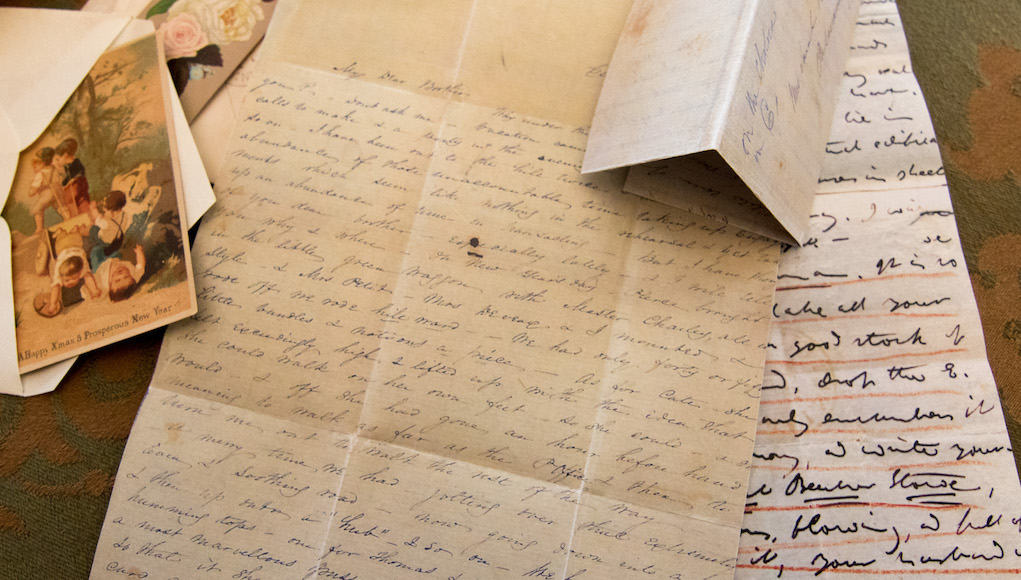
The following is a multi-authored blog about a college literature class on Mark Twain, Harriet Beecher Stowe, and some of their contemporaries, which was taught on-site at the Stowe and Twain house museums in Hartford, Connecticut. You will hear from the college professor who initiated the course, the museum educators who collaborated on the course, and two community college students who participated in the course, all of who hope that this will inspire college instructors to consider similar collaborations with museums. While not all colleges have Harriet Beecher Stowe or Mark Twain as a neighbor, there may still be other valuable opportunities to collaborate with museums.
1. A Literature Class in a Museum? How Did That Happen?
For several years, I had been taking my American literature class to the Harriet Beecher Stowe and Mark Twain house museums. (The two great American authors lived next door to each other in Hartford, Connecticut). We would spend a couple of hours learning about the authors from museum staff and touring their homes. I was amazed at the impact of those brief two hours of place-based learning. My students’ interest soared – they asked questions about the house, they commented on the way Hartford has changed since Twain and Stowe’s time, and they dug deeper into the novels. For many, this was their first visit to these museums, even though they had lived in or near Hartford their whole lives.
I began to see that these brief two hours were impacting my students’ engagement with literature, with each other, with me and with the city of Hartford.
And I began to see that these brief two hours were…well, too brief!
What if we could stay longer? What if we could make full use of the house museums, the exhibits, the staff expertise, the archives and more?
With the support of my college administration, I approached the museums with a proposal to teach a course on Mark Twain and Harriet Beecher Stowe that would meet on site for the entire semester at the museums. Thus was born English 220 Studies in American Literature – Stowe and Twain.
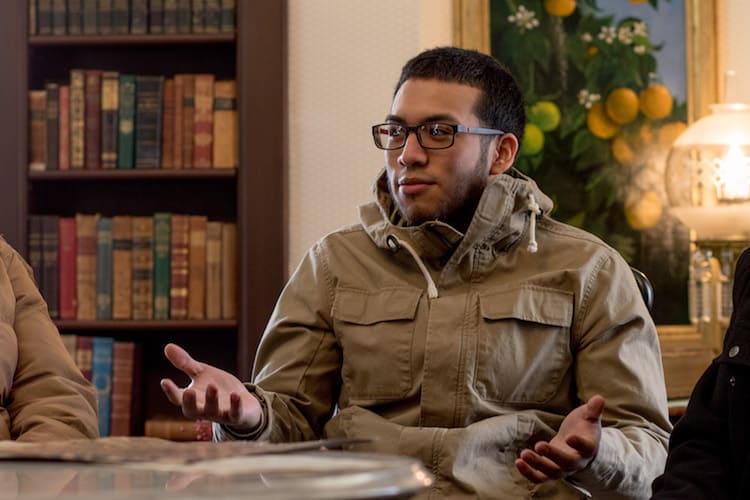
After agreeing to give it ago, we then had to work through a series of challenges. We decided on a hybrid schedule (one week on site at the museums, one week online) so that we would not over-tax museum staff and space. We agreed upon a fee at a happy medium that would defray some of the museum expenses without over-burdening the college budget. We coordinated a syllabus that took advantage of the strengths of the museums without turning a literature class into a history course. We designed activities and assignments that engaged students with archives, primary documents and material culture that would enhance their understanding of the readings.
We have offered this class for the last two fall semesters. It has taken a lot of work and sacrifice, but seeing the engagement of the students, the depth of the learning experience and the appreciation they develop for the place where they live makes it all worthwhile.
Jeffrey Partridge, Ph.D., is Professor of English, Chair of Humanities and Director of the Hartford Heritage Project at Capital Community College in Hartford, Connecticut.
2. Relationships of Mutual Interest – Connecting to the Stowe Center’s Mission
The Stowe Center is a museum with a social justice mission, and our tours and programs trace meaningful connections between Harriet Beecher Stowe’s abolitionist activism and 21st-century culture, focusing especially on issues of race and gender. We’re deeply invested in creating conversations that address the concerns of our Hartford community, and so the opportunity to collaborate with CCC was not one to be missed.
This course gave students unprecedented access to the historic sites, objects and archives of several of Hartford’s most influential authors and activists. I was able to help students encounter literature and history in new, more profound ways: demystifying the often-intimidating spaces of the museum and encouraging students to become active participants in their own education.
I watched students make compelling connections between the literary texts they read and their own lived experiences—connections facilitated by their place-based education. For example, one of our salon-style conversations about Nook Farm resident Isabella Beecher Hooker—one of Connecticut’s most passionate women’s rights activists—developed into a sustained and thoughtful debate about students’ ideas about our modern political moment. I watched them effortlessly weave together 19th- and 21st-century narratives about society’s expectations for women—and I was so impressed!

That kind of intellectual effort was, I think, due in large part to the unique opportunities the course afforded. These students had held documents written by Isabella, had sat in the dining rooms where she had conversed with her neighbors about these issues, and had learned about the particular challenges of living in Hartford in the nineteenth century – and then put them into context with their own writings, their own objects and homes, their own experiences in Hartford and elsewhere.
Of course, the course did have its challenges. Students struggled to do independent research in the museum archives, and the logistics of a hybrid course made some discussions seem fractured or incomplete. But in general, the course was an incredible experience—for me and for our students—and the Stowe Center is looking forward to continuing our partnership with CCC in the future.
Catherine Burton, Ph.D., is a museum educator at the Harriet Beecher Stowe Center in Hartford, CT. She has published articles about Victorian and postbellum American literature and culture.
III. Transcending the One-Stop School Visit – Sustained Engagement with the Mark Twain Collection
Museum education often feels like a one-stop-shop: classes arrive for a field trip, the museum rolls out the set programs, and the class leaves. The teacher is (ideally) happy the curriculum received a special boost, and the museum is happy to share their collection. Hopefully things ran relatively on time, nobody broke anything, and everybody made it back on the bus.
I wanted a way to transcend that model. How could we have our own class here? How could we prompt a sustained engagement with our collection? The idea for this class presented the opportunity to experiment accordingly.
Initially, we designed the course directly around the collection strengths of the two institutions. While studying H.B. Stowe’s writing, the students immersed themselves in the Stowe Center’s impressive archive, supplementing their literary seminar discussions with primary source research. At The Mark Twain House, the students read Twain while “reading” our artifact collection, trying to connect ideas of material culture to literature. We prompted them to think about objects as valid pieces of historical evidence, just like the letters and diaries they had previously experienced at the Stowe Center. One of our exhibitions paired personal items collected during Twain’s extensive journeys with his iconic travel books, facilitating this analysis. They were led to consider whether seeing the way Twain lived shaped their views of his books.
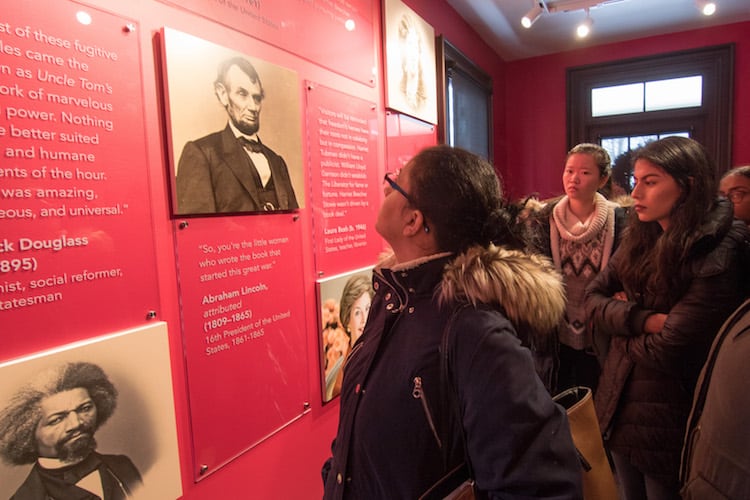
For the second year, we expanded beyond our two principal authors to embrace more members of their Hartford literary community, known as Nook Farm. Students now read additional authors like Isabella Beecher Hooker and Charles Dudley Warner. Nook Farm’s distinctive social life became a lens for the study of literature, such as teaching The Gilded Age, co-authored by Twain and Warner, with the correspondence showing how they wrote the book through dinner parties with their wives. We also expanded the scope of our physical sources: for instance, when studying A Connecticut Yankee in King Arthur’s Court, I led a walking tour of the existing sites associated with the novel’s initial setting of Hartford’s Colt Factory.
While incorporating museums into university teaching is not new, doing so by breaking away from the model of a university art gallery or a (now-problematic) anthropology collection is innovative. Historic houses are not often at the forefront of dynamic new ways of being a museum. Thanks to Capital Community College’s willingness to experiment, The Mark Twain House & Museum gets to buck that trend.
James Golden, D.Phil., is Director of Education at The Mark Twain House & Museum and a Visiting Professor in the Department of History at Trinity College, Hartford, CT.
IV. The Benefits of Off-Campus Learning: A Student Perspective
Last semester I had the privilege of being a student in my school’s Studies in American Literature course. At first all I knew of the class is that it was mostly taught at the Mark Twain House and Museum. I thought it would be a good opportunity to get off campus for a class, but never imagined I would learn as much as I did, nor that I would be so fully immersed into a single class. To describe the course content isn’t a simple task, because we did so much more than learn about great literature. We were taken through history – of our city, our state, and our country, while debating over race relations, gender equality, artistic influences, the American civil war, the cultural impact of Nook Farm’s residents, and a bevy of other subjects that came along as we traversed the most diverse and in-depth class I’ve ever had the pleasure of taking.
Intrigued? You should be. With the works of Mark Twain, Harriet Beecher Stowe and other Nook Farmers in hand, we studied the words and their vast impact on our society as a whole. The words that started a great war and forced Americans to examine their own lives and their culpability in some of the worst crimes and greatest achievements our nation has had. Not only did I learn, but because of the depth this course had, I was challenged to expand upon my own thoughts and ability as a scholar; as were my fellow classmates.
In any classroom setting this would be a great course, but experiencing the homes, community and lives of these writers and revolutionaries first-hand made this a truly remarkable and unforgettable experience that all students should have the chance to explore.
Abi Rodriguez is a second-year student at Capital Community College, president of the student senate and author of two books: The Stage of Martyrdom, and The Rose Colored Glasses.
V. Greater Appreciation for Hartford – A Student Perspective
I am still relatively new to the city of Hartford, having only lived here for less than three years. As such, I had little to no knowledge of its history and historical significance to America and American Literature. My interest in my new city piqued when I moved directly across from an opulent, obviously Victorian mansion that stood in stark contrast to all the dreary-looking apartments on Farmington Avenue. After learning it was the home of Mark Twain, one of America’s greatest authors, and situated right next to it was the home of Harriet Beecher Stowe, I was immediately pulled in and became enthused about learning much more about these inspiring authors and also about Hartford.
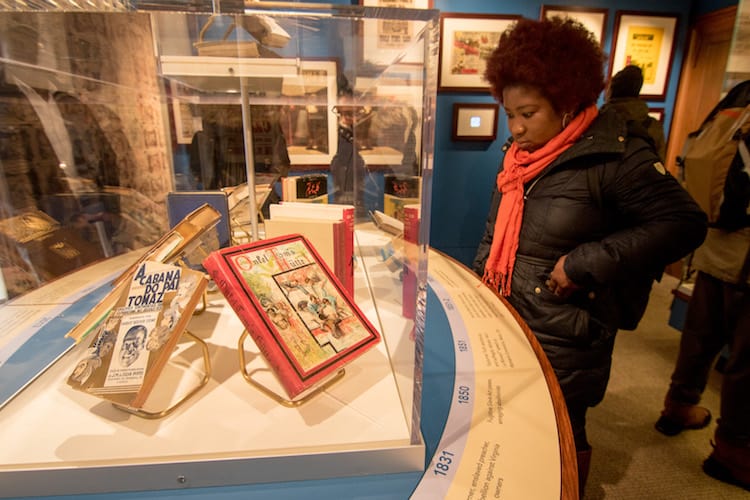
I learned about this hybrid class partially through a fellow classmate and partially through researching necessary English electives. It was an easy choice to make to pursue this course even though I am a Math/Business major due to my newfound interest in Hartford history and my new neighbors. At the end of it, I can say without any qualms that it was a great experience and a very valuable method of learning. The fact that I had the opportunity to study these writers in their homes, see where and how they lived, experience how they may have felt when they were penning their most notable works, and see what may have inspired them or influenced the characters, settings and themes of their writings, really put it all into perspective. It became easier to analyze and understand the literature after I had so much more background and context.
By the end of the semester, I was so enraptured by the museums, the authors and the history, that I still regularly find myself going back to learn more, and willfully recommending anyone who will listen to do the same. Being able to take this class has been exciting, and I feel honored I was afforded the opportunity. I now have a deeper appreciation for Hartford and how it impacted and was impacted by American Literature and these great authors.
Shawntoll Buchanan-Boothe, a native of Jamaica, graduated summa cum laude from Capital Community College and is pursuing a Business Management degree at Central Connecticut State University.
For more on Place-Based Education, see:
- What is Place-Based Education and Why Does it Matter?
- Infographic | The Potential of Place-Based Education
- 5 Reasons to Take Time Out of the Classroom
The Hartford Heritage Project and Capital’s place-based education efforts were recently featured in a podcast. JeffreyPartridge, director of the Hartford Heritage Project and Humanities Chair at Capital, was interviewed on Teaching Matters, a podcast hosted by Scott Titsworth, Dean of Scripps College of Communication at Ohio University, and produced by WOUB public radio in Athens, Ohio.
Stay in-the-know with all things EdTech and innovations in learning by signing up to receive the weekly Smart Update.


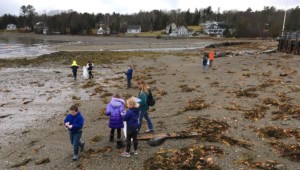

0 Comments
Leave a Comment
Your email address will not be published. All fields are required.